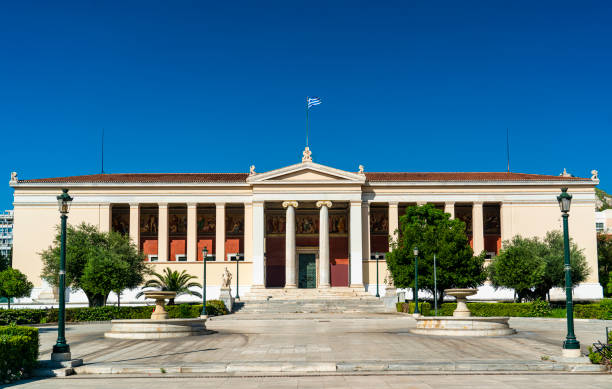The Alhambra: A Timeless Symbol of Islamic Art, Architecture, and History in Spain
The Alhambra, one of the most famous and captivating landmarks in Spain, stands as a testament to the glory of Islamic architecture and the rich cultural history of Andalusia. This awe-inspiring palace and fortress complex, located in the heart of Granada, offers a glimpse into the past through its intricate art, architecture, and history. With a deep narrative intertwined with politics, power, art, and religion, the Alhambra continues to draw millions of visitors each year, offering a unique insight into the Islamic Golden Age and the cultural melting pot of medieval Spain.

Introduction to the Alhambra
The Alhambra is a stunning citadel that combines a series of palaces, gardens, and fortifications set atop the rolling hills of Granada, Spain. The name "Alhambra" is derived from the Arabic word “Al-Ḥamrāʾ” (الحمرا), meaning "the red one," a reference to the reddish-tinted walls of the fortress, which glow magnificently at sunset. Originally, the site was a modest military fortress, but over centuries, it evolved into a sophisticated and sprawling palace complex that represented the height of Islamic art, architecture, and intellectual achievement.
The Historical Context
The Alhambra’s history is intricately linked with the Muslim rule in Spain, known as Al-Andalus. The Muslim conquest of the Iberian Peninsula began in the early 8th century, and by the mid-11th century, the region was politically fragmented. Granada, under the Nasrid Dynasty, emerged as the last Islamic stronghold on the Iberian Peninsula, surviving long after the fall of other Muslim kingdoms.
In 1238, Muhammad I, the founder of the Nasrid Dynasty, established the kingdom of Granada. He chose the site of the Alhambra to build a fortress to defend the city and to serve as the royal residence for his descendants. The Alhambra’s transformation from a military stronghold to a luxurious palace was largely due to the efforts of subsequent rulers, particularly the Nasrid sultans, who lavished great care on its construction and decoration.

The Architecture of the Alhambra
The Alhambra’s architecture is a stunning fusion of various styles, reflecting the diverse cultural influences that shaped Spain during the medieval period. At its heart, the Alhambra combines elements of Islamic, Christian, and Jewish art, showcasing the multicultural atmosphere of Granada at the time.
-
Islamic Influence: The architecture of the Alhambra is a quintessential example of Islamic art and architecture. The complex is characterized by its use of intricate geometric patterns, arabesques, and calligraphy. Islamic architecture generally avoids the use of human figures, favoring abstract and symbolic decoration. This is evident in the Alhambra's ornamental tile work, stucco carvings, and wooden ceilings, all of which feature stunning patterns that seem to dissolve into infinity.
The Alhambra’s courtyards and gardens, such as the famous Patio de los Leones (Court of the Lions), are designed according to principles that emphasize water as a symbol of life and paradise. Fountains and reflective pools are an essential part of the design, allowing light to bounce off the water and creating a sense of serenity and tranquility.
-
Christian Influence: After the Christian Reconquista in 1492, when King Ferdinand and Queen Isabella captured Granada, the Alhambra underwent several modifications. Christian influence can be seen in some of the additions to the complex, such as the construction of the Palace of Charles V. The palace, built in the Renaissance style, stands in stark contrast to the rest of the Alhambra’s Islamic architecture with its round, symmetrical design. It marks a period of transition from Islamic rule to Christian dominance and serves as a reminder of the political and cultural shifts during this period.
-
Moorish Revival: In the 19th century, the Alhambra became a symbol of Romanticism, particularly in Europe, where the fascination with the Moorish style reached its peak. Writers and artists, including Washington Irving, who wrote Tales of the Alhambra in 1832, helped cement the Alhambra’s place in Western cultural imagination. This period saw the Alhambra being both romanticized and studied as a critical cultural artifact.
The Key Elements of the Alhambra Complex
The Alhambra consists of various sections, each of which plays a vital role in the complex’s function and beauty.
-
The Alcazaba (The Fortress): The Alcazaba is the oldest part of the Alhambra, originally constructed in the 9th century. Its primary function was military, serving as a defensive fortress to protect the inhabitants of Granada. The fortress offers panoramic views of the city, including the Sierra Nevada mountains and the fertile plains surrounding Granada. The Alcazaba is characterized by its robust walls, watchtowers, and the imposing Gate of the Pomegranate, which is the main entrance to the entire Alhambra complex.
-
The Nasrid Palaces: The Nasrid Palaces are the crown jewels of the Alhambra and are considered the epitome of Islamic palace design. These palaces are renowned for their intricate decoration, geometric patterns, and the use of water as a central theme in the design. The most famous part of the Nasrid Palaces is the Palacio de los Leones (Palace of the Lions), where the Court of the Lions, with its exquisite fountain supported by twelve marble lions, is located. This palace represents the height of Nasrid art and architecture, with rooms adorned with delicate stucco work, beautifully painted ceilings, and stunning tile mosaics.
-
The Generalife: The Generalife is a summer palace and garden located adjacent to the Alhambra. Its lush gardens, courtyards, and fountains were designed as a retreat for the Nasrid sultans. The Generalife is renowned for its stunning water features, which include ornamental fountains and reflective pools that enhance the beauty of the surrounding plants and flowers. The combination of water, plants, and architecture in the Generalife exemplifies the Islamic concept of paradise on earth.
-
The Palace of Charles V: The Palace of Charles V was built after the Christian Reconquista, commissioned by Emperor Charles V. The palace is an example of Renaissance architecture and contrasts sharply with the Islamic style of the rest of the Alhambra. The Palace of Charles V is known for its circular courtyard and its ornate facade, which blends classical elements with the remnants of Islamic designs.
-
The Partal: The Partal is another important part of the Alhambra complex, known for its tranquil garden and the distinctive Partal Tower. The name "Partal" is believed to come from the Arabic word for "gateway," as this part of the Alhambra was one of the entrances to the palace. The Partal’s peaceful atmosphere, enhanced by its reflective pool, is a perfect example of the Islamic garden design principles that emphasize harmony and the balance between water, light, and nature.
Symbolism and Decorative Art
The Alhambra is not only a monumental feat of architecture but also a masterpiece of decorative art. Its design is rich in symbolism, with each element crafted to convey deeper meanings. For example:
-
Geometric Patterns: The use of intricate geometric patterns in the Alhambra is a hallmark of Islamic art. These patterns are thought to symbolize the infinite nature of God, as they create a sense of endless repetition. The geometrical motifs are designed to evoke both a sense of order and divine perfection.
-
Calligraphy: The walls of the Alhambra are adorned with Arabic inscriptions, many of which are verses from the Quran. These inscriptions not only serve a decorative purpose but also have religious significance, conveying spiritual messages about the nature of God, faith, and the idealized Islamic society.
-
Water as a Symbol of Life: Water features are central to the design of the Alhambra. Fountains, reflecting pools, and streams are carefully placed throughout the palace complex, symbolizing the concept of paradise and eternal life. In Islamic gardens, water represents the sustenance of life and the divine bounty of nature.
-
Stucco Work: The Alhambra is famous for its stucco work, which covers many of its walls and ceilings. The intricate patterns of vines, flowers, and geometric designs serve both an aesthetic and symbolic purpose, contributing to the overall sense of harmony and beauty within the palace.
The Decline and Rediscovery of the Alhambra
After the fall of Granada in 1492, the Alhambra's significance began to diminish, particularly during the period of Christian rule. Many parts of the Alhambra were neglected, and parts of the structure were repurposed or altered. However, the Alhambra never completely lost its allure.
In the 19th century, the Alhambra experienced a revival, largely due to the Romantic movement. Writers, artists, and historians were drawn to the Alhambra’s mysterious beauty, which they saw as a symbol of the decline of Islamic rule and the passing of a golden age. This period saw the first major archaeological studies and efforts to restore parts of the palace.
The Alhambra Today
Today, the Alhambra is one of Spain’s most visited tourist attractions, drawing millions of visitors annually. Its importance goes beyond tourism; the Alhambra is recognized as a symbol of cultural fusion, where Islamic, Christian, and Jewish influences came together to create one of the world’s most beautiful and historically significant buildings. The Alhambra was declared a UNESCO World Heritage Site in 1984, and its status as a cultural landmark has only grown over time.
The Alhambra remains an enduring symbol of the Islamic Golden Age in Spain and the remarkable achievements of the Nasrid dynasty. Visitors continue to be mesmerized by its breathtaking beauty, intricate architecture, and tranquil gardens. It serves as a reminder of a time when Granada was a beacon of learning, art, and culture, and its legacy continues to shape the cultural and architectural landscape of Spain today.
Conclusion
The Alhambra is not merely a collection of stone and mortar but a living symbol of a rich and complex history. It stands as a reminder of the splendor of Islamic civilization, the cultural diversity of medieval Spain, and the enduring power of architecture and art to transcend time. It is a testament to the creativity, vision, and enduring legacy of the Nasrid Dynasty and a captivating part of Spain's national heritage.
Photo from: iStock, pixabay




